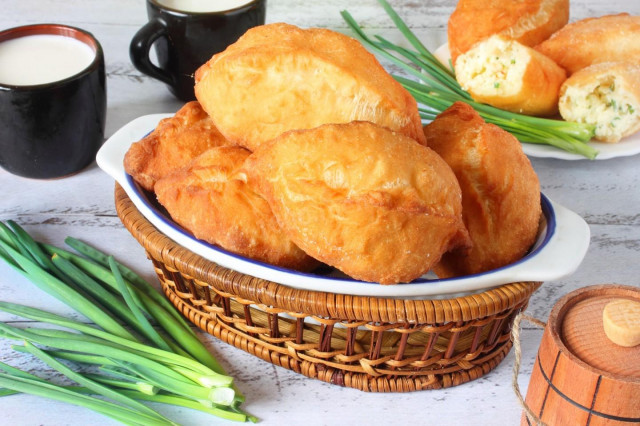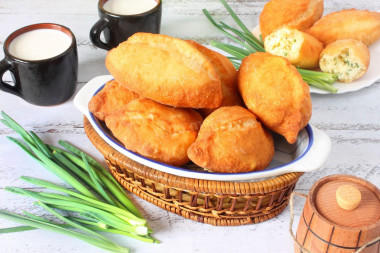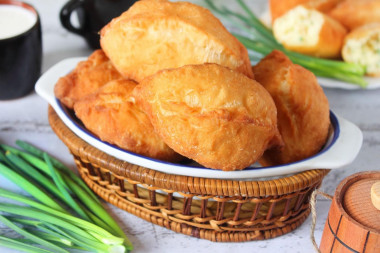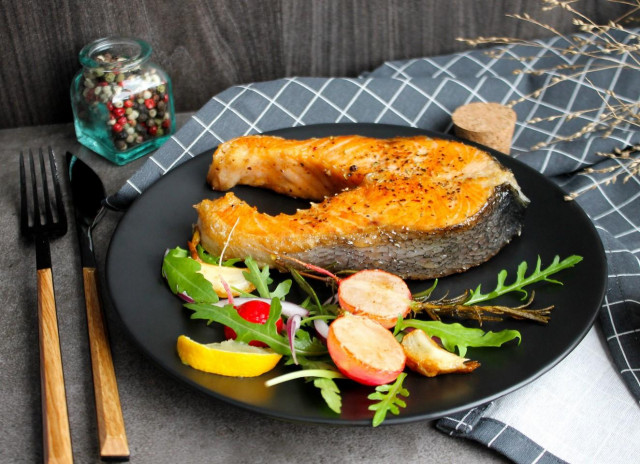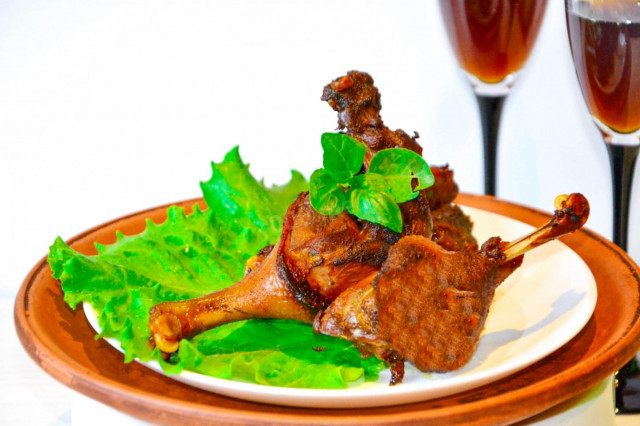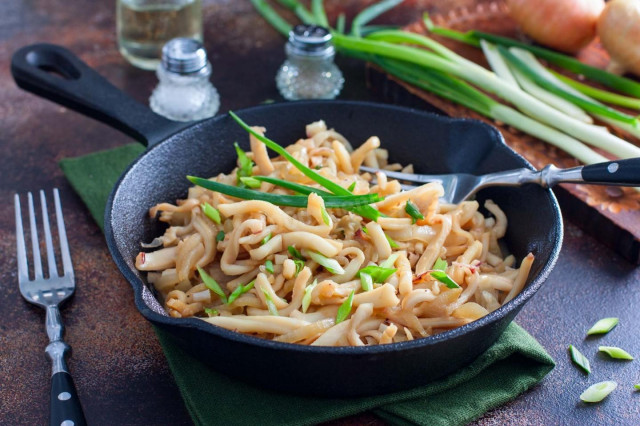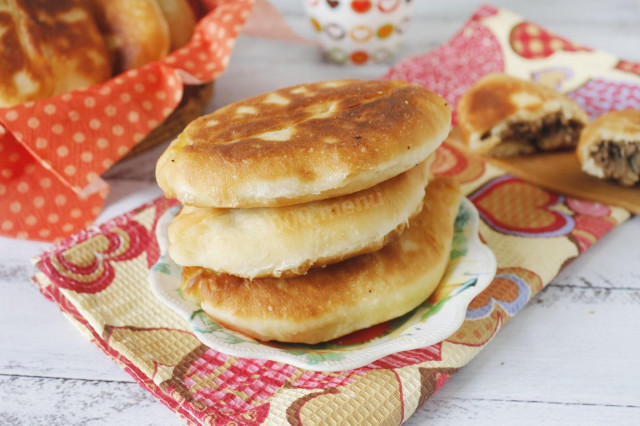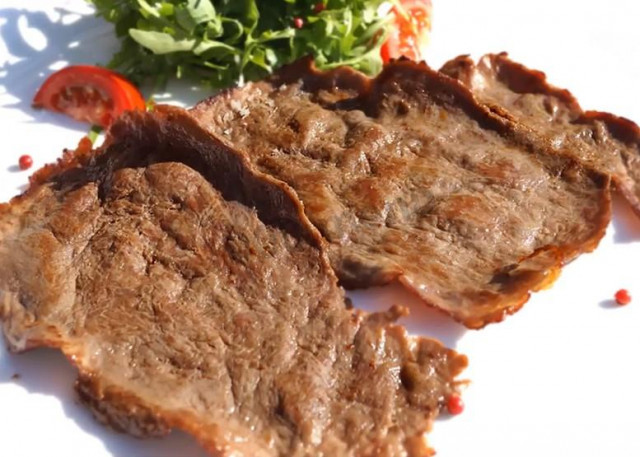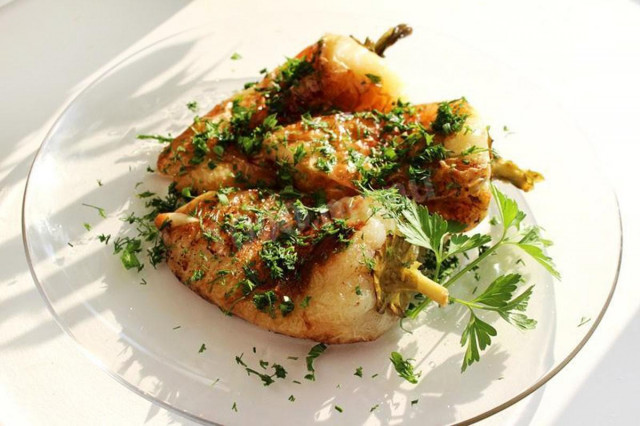Composition / ingredients
Step-by-step cooking
Step 1:
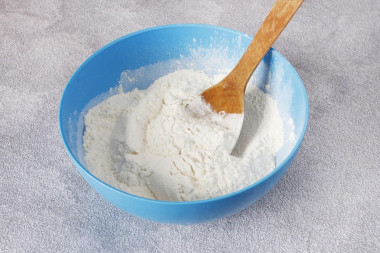
Sift flour through a strainer into a deep bowl, add instant yeast, which does not need to be pre-soaked. Lately I've been using only these - the pastries come out lush.
Step 2:
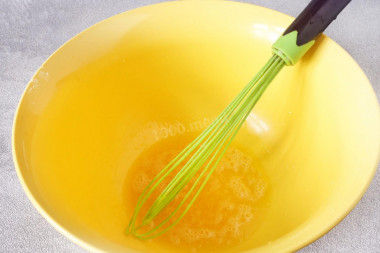
In a separate large deep bowl designed for kneading dough, we drive an egg at room temperature with a whisk (for this it must be taken out of the refrigerator in advance) with salt and sugar.
Step 3:
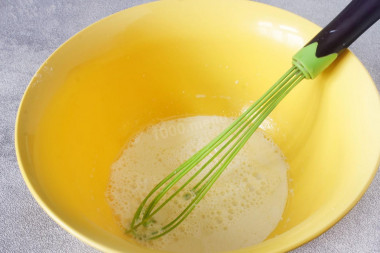
Pour refined vegetable oil and warm milk heated on the stove to 35 degrees into the egg mixture. I used store-bought milk with a fat content of 2.5 percent. Poured and mixed everything with a whisk.
Step 4:
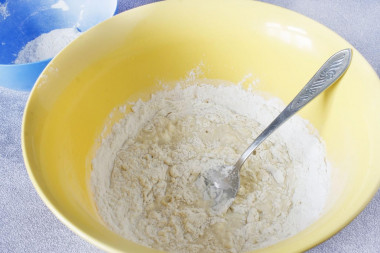
Now we begin to pour the flour mass in small portions, mixing everything in parallel with a spoon. When the mass gathers into a lump, we shift it to the desktop.
Step 5:
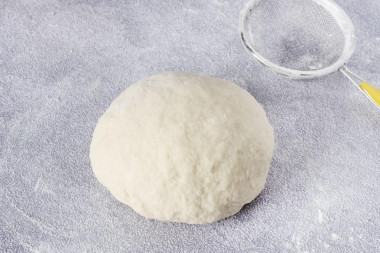
The table can be dusted with flour if necessary, but only if the dough is very sticky. Knead the dough in the usual way, bending the edges to the middle with good pressure. Knead for 10 minutes. We roll it into a ball, cover it with a film and leave it in the heat for 1 hour for the approach. I usually turn on the comfort in the kitchen for the time of the test approach. You can knead it after 5-10 minutes additionally, when it becomes more elastic.
Step 6:
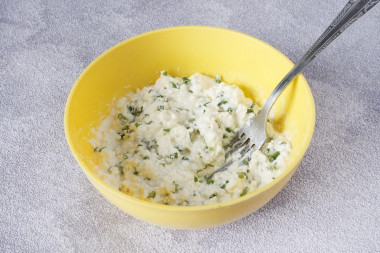
While the dough is coming, we will make the filling. I took cottage cheese with a fat content of 9%. Pour it into a deep bowl, add salt to taste, beat in an egg and add chopped green onions. Fresh dill can also be used as greens. Mix everything with a fork until smooth. The filling is ready.
Step 7:
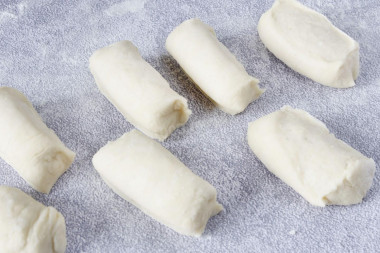
When the time allotted for the test has passed and it will increase in volume, we will start modeling pies. We knead the dough, roll out a round sausage from it and divide it into 12 equal parts with a knife - medium-sized pies will turn out. We put these roundels aside and sprinkle a little flour.
Step 8:

We take one blank, knead it into a flat cake with our hands not too thinly (so that the filling does not leak and does not break through the pie), put a tablespoon of filling in the middle and pinch the edges tightly, forming an oblong pie. We do this with the whole test.
Step 9:
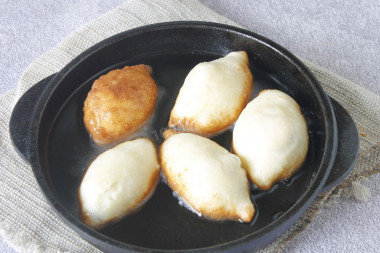
Pour a large enough amount of oil into the pan so that it reaches half of the pies, warm it up and fry the pies in several batches on both sides until brown over medium heat.
Ruddy pies with fervor from the heat to your table.
Caloric content of the products possible in the composition of the dish
- Whole cow's milk - 68 kcal/100g
- Milk 3.5% fat content - 64 kcal/100g
- Milk 3.2% fat content - 60 kcal/100g
- Milk 1.5% fat content - 47 kcal/100g
- Concentrated milk 7.5% fat content - 140 kcal/100g
- Milk 2.5% fat content - 54 kcal/100g
- Chicken egg - 157 kcal/100g
- Egg white - 45 kcal/100g
- Egg powder - 542 kcal/100g
- Egg yolk - 352 kcal/100g
- Ostrich egg - 118 kcal/100g
- Cottage cheese of 40% fat content - 466 kcal/100g
- Cottage cheese of 20% fat content - 233 kcal/100g
- Cottage cheese of 18% fat content - 226 kcal/100g
- Cottage cheese of 10% fat content - 156 kcal/100g
- Low-fat cottage cheese - 75 kcal/100g
- Cottage cheese with sour cream - 260 kcal/100g
- Fruit cottage cheese - 147 kcal/100g
- Soft dietary cottage cheese - 170 kcal/100g
- Cottage cheese "Vitalinia" - 64 kcal/100g
- Cottage cheese "morning" ( "danone") without sugar - 91 kcal/100g
- Cottage cheese - 156 kcal/100g
- Whole durum wheat flour fortified - 333 kcal/100g
- Whole durum wheat flour universal - 364 kcal/100g
- Flour krupchatka - 348 kcal/100g
- Flour - 325 kcal/100g
- Granulated sugar - 398 kcal/100g
- Sugar - 398 kcal/100g
- Vegetable oil - 873 kcal/100g
- Green onion - 19 kcal/100g
- Salt - 0 kcal/100g
- Dry yeast - 410 kcal/100g

